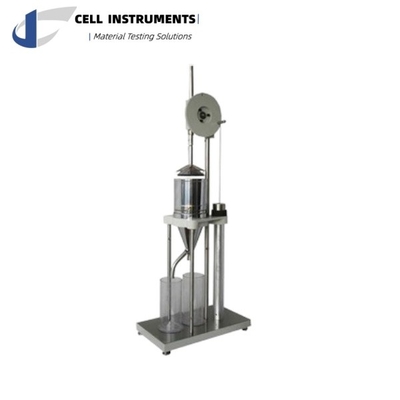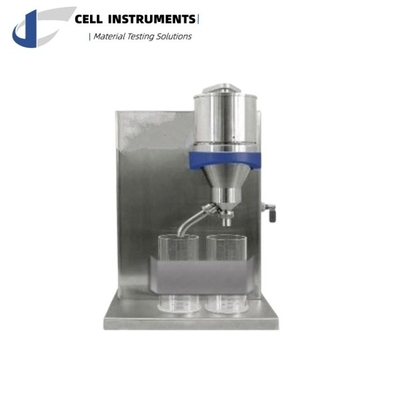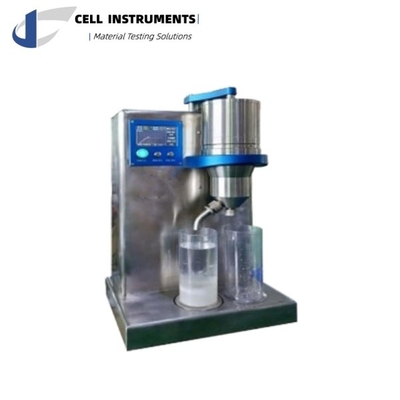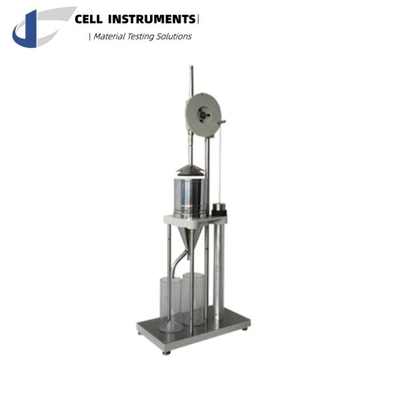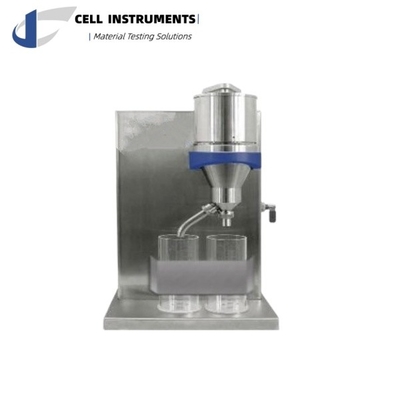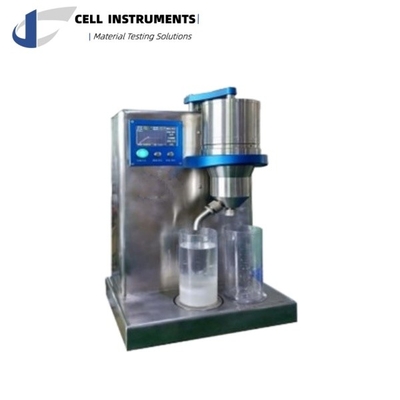Beating and Freeness Tester DJD-01 Schopper-Riegler Test for Pulp Suspension Drainability Proficiency

Contact me for free samples and coupons.
WhatsApp:0086 18588475571
Wechat: 0086 18588475571
Skype: sales10@aixton.com
If you have any concern, we provide 24-hour online help.
x| Measuring Range | 1~100 SR | Division Value Of Measuring Cylinder | 1 SR |
|---|---|---|---|
| Orifice Draining Time | 149±1s | Residual Volume | (7.5~8.0)ml |
| Sealing Cone Raising Speed | 100±10mm/s | Dimension | 450*250*1200mm |
Beating and Freeness Tester DJD-01 Schopper-Riegler Test for Pulp Suspension Drainability Proficiency
![]()
Introduction to the Beating and Freeness Tester
The Beating and Freeness Tester DJD-01 is a cutting-edge instrument designed for evaluating the drainability of pulp suspensions in water based on the Schopper-Riegler (SR) test method. This test is crucial for determining how easily a dilute suspension of pulp can be dewatered. The Beating and Freeness Tester is widely used in laboratories across industries such as paper manufacturing, packaging, food, pharmaceuticals, and more. It provides essential data about the pulp's physical properties, including its surface conditions and swelling behavior, which are directly related to the pulp's mechanical treatment during processing.
The Schopper-Riegler (SR) number is a key measure derived from this test. It provides valuable insight into the pulp’s characteristics, helping manufacturers ensure the quality and suitability of pulp for paper and packaging applications. This method is particularly useful for assessing the effectiveness of mechanical treatments and the processing conditions applied to the pulp during production.
The Beating and Freeness Tester measures the drainage rate of pulp in an aqueous suspension, indicating how efficiently the fibres have been treated during the pulping process. By understanding the Schopper-Riegler number, manufacturers can fine-tune their processing parameters to optimize product quality, improving the overall efficiency of production lines.
| DJD-01 | |
| Measuring Range | 1~100 SR |
| Division Value of Measuring Cylinder | 1 SR |
| Orifice Draining Time | 149±1s |
| Residual Volume | (7.5~8.0)ml |
| Sealing Cone Raising Speed | 100±10mm/s |
| Dimension | 450*250*1200mm |
| DJD-02 | |
| Measuring Range | 1~100 SR |
| Operation | Auto Release |
| Sealing Adjustment | Auto Sealing |
| Side Orifice Adjustment | Adjustment button equipped, random setting of residual volume |
| Orifice Draining Time | 149±1s |
| Residual Volume | (7.5~8.0)ml |
| Sealing Cone Raising Speed | 100±10mm/s |
| Dimension | 410*360*760mm |
| DJD-03 | |
| Measuring Range | 1~100 SR |
| Display | Digital, drainage curve analysis |
| Resolution | 0.1 SR |
| Operation | Auto Release |
| Sealing Adjustment | Auto Sealing |
| Side Orifice Adjustment | Adjustment button equipped, random setting of residual volume |
| Orifice Draining Time | 149±1s |
| Residual Volume | (7.5~8.0)ml |
| Sealing Cone Raising Speed | 100±10mm/s |
| Dimension | 410*360*760mm |
How the Beating and Freeness Tester Works
The Beating and Freeness Tester operates based on a simple yet effective principle. During testing, a pulp suspension is poured onto a wire screen, where it forms a fibre mat. This mat then drains a specified volume of water into a funnel, which is equipped with a side orifice. The discharge from the side orifice is collected in a measuring cylinder, graduated according to the Schopper-Riegler number. This process allows for an accurate determination of the pulp’s drainability, which can be directly correlated to the pulp’s mechanical treatment and fibre structure.
The Beating and Freeness Tester measures the time it takes for the pulp suspension to drain through the fibre mat, with the Schopper-Riegler number acting as a benchmark for assessing pulp quality. A lower SR number indicates slower drainage and a higher degree of pulp beating, while a higher SR number indicates faster drainage and a lower degree of beating.
Key Features of the Beating and Freeness Tester
- Non-corrosive Construction: The Beating and Freeness Tester is made from high-quality materials that resist corrosion, ensuring durability and longevity even in demanding laboratory environments.
- Low Maintenance: This tester requires minimal maintenance, making it a cost-effective solution for laboratories and manufacturing facilities.
- Easy to Use and Clean: The user-friendly design and stainless steel components make the Beating and Freeness Tester easy to operate and maintain, ensuring that it remains in optimal condition with little effort.
- Robust Design: Built to last, the Beating and Freeness Tester features a robust design that can withstand frequent use in both research and industrial settings.
Advantages of the Beating and Freeness Tester
- Non-corrosive and Durable: Constructed with corrosion-resistant materials for long-term use.
- Low Maintenance: Requires minimal upkeep, reducing operational costs.
- User-friendly Operation: Simple to operate and easy to clean after each use.
- Reliable Results: Provides precise measurements that correlate with pulp quality and treatment.
Standards Compliance
The Beating and Freeness Tester complies with international testing standards to ensure reliability and accuracy in the results. It meets the requirements of:
- ISO 5627-1
- GB/T 3332
- QB/T 1054
These standards ensure that the tester delivers consistent and accurate results, essential for quality control in pulp production and related industries.
Understanding the Schopper-Riegler Number
The Schopper-Riegler number (SR number) is a key measure of pulp freeness and is used to assess the drainage rate of pulp suspensions. The SR number is determined based on the volume of water discharged during the test:
- An SR number of zero corresponds to no discharge (extremely poor freeness).
- An SR number of 100 corresponds to a high rate of drainage, indicating good freeness.
The Beating and Freeness Tester helps determine this critical value, allowing pulp manufacturers to adjust their processing methods to achieve optimal quality and performance.
FAQs About the Beating and Freeness Tester
-
What is the Schopper-Riegler number scale? The SR number scale measures the drainage rate of pulp, with zero discharge corresponding to an SR number of zero and a discharge rate corresponding to an SR number of 100.
-
What is ‘stock’ in the pulp beating freeness test? In the context of the Beating and Freeness Tester, "stock" refers to the aqueous suspension of disintegrated pulp that is tested for its drainability.
-
How does the Beating and Freeness Tester work? The tester works by forming a fibre mat on a wire screen through which a pulp suspension is drained. The rate of drainage is then measured, and the SR number is calculated.
-
What are the key benefits of using the Beating and Freeness Tester? The key benefits include accurate measurement of pulp drainability, easy operation and maintenance, and compliance with international standards for pulp testing.
-
How accurate are the results from the Beating and Freeness Tester? The Beating and Freeness Tester provides highly accurate results, essential for assessing pulp quality and optimizing the manufacturing process.
![]()
![]()



